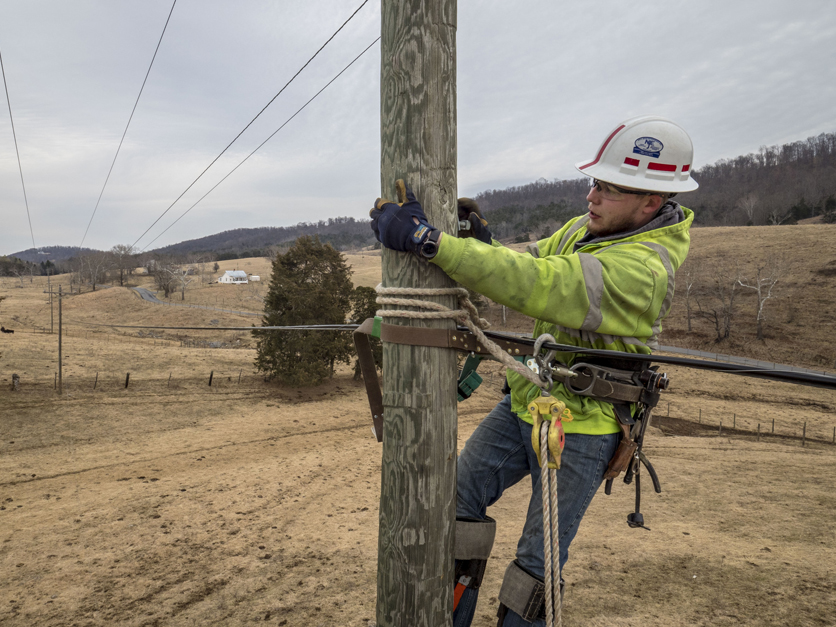A bipartisan group of senators hope a bill directing the Federal Communications Commission to improve broadband coverage and mobile data maps will bridge the digital divide across America and correct “vastly inaccurate” mapping of the issue.
The Improving Broadband Mapping Act, introduced last week, directs FCC to complete a rule considering consumer-reported data along with local and state data from government entities. The bill also directs FCC to consider ways to better challenge fixed and mobile data collection.
Sens. Amy Klobuchar, D-Min., Shelley Moore Capito, R-W.Va., Joe Manchin, D-W.Va., and John Hoeven, R-N.D. introduced the bill.
“We need reliable data on where service exists and where it does not,” Klobuchar said.
The bill comes almost a month after FCC released the Draft 2019 Broadband Deployment Report in February. According to FCC data, since last year’s report, the number of Americans lacking access to a fixed broadband connection dropped 25 percent from 26.1 million Americans in 2016 to 19.4 million in 2017.
“This report shows our approach is working,” FCC Chairman Ajit Pai said in a February statement. “But we won’t rest until all Americans can have access to broadband.”

FCC Chairman Ajit Pai
But even Secretary of Agriculture Sonny Perdue seemed to question FCC’s maps during a recent Senate Ag Committee hearing.
“I don’t want to be political, but we believe that the FCC coverage maps are fake news,” he said. “They were primarily generated from carriers, who don’t want to see more competition.
FCC currently collects speed and availability data from providers every six months on fixed broadband coverage. The information is built into a census which is made up of census blocks. The Commission considers a census block served if there is one customer getting broadband deployment speeds at 25/3 megabits per second (25 mbps download speed, 3 mbps upload speed).
Sen. Hoeven argues some areas are “misidentified” as covered with broadband service when not everyone in the census block has coverage. It’s not so much a problem in cities but more-so rural areas, he explained.
A city may have dozens of people living within a census block, but in a rural area, blocks are much bigger because less people live there.
“That leads to a vast overstatement of broadband availability out there,” Brian O’Hara, senior director of regulatory affairs at the National Rural Electric Cooperatives Association said. In September 2018, Capito and Klobuchar sent a letter to Pai stating mobile coverage maps and broadband coverage reports were overstated. “Accurate broadband availability maps are essential for us to evaluate who has access and who does not,” said Capito.
O’Hara added inaccurate reporting from companies has “taken away a lot of the areas where someone could come in a get money.”
Shirley Bloomfield, CEO of NTCA — The Rural Broadband Association said, “mapping has been one of the biggest questions” in the broadband deployment community because federal money must go where it’s “most-needed.”
The FCC is currently taking comments on how it could improve census block data by making broadband data more-defined. The Commission also maps mobile data coverage such as 4G and LTE. It’s more complicated because carriers submit their own coverage data to FCC.
In August 2017, FCC setup a challenge process for the Mobility Fund Phase II after receiving several complaints about mobile coverage submission discrepancies. Mobility Fund Phase II (MF-II) allocates up to $4.53 billion available over 10 years to primarily rural areas lacking unsubsidized 4G Long Term Evolution (LTE) service.
Manchin challenged the FCC in November 2018 by submitting data showing FCC data did not depict accurate broadband coverage in West Virginia. “I know firsthand just how valuable public input can be in validating and supplementing the provider data used to draw these maps,” Manchin said. He described the bill as a great “first step.”
In February 2018, National Telecommunications and Information Administration (NTIA) chose Minnesota and West Virginia to work with six other states on improving the national broadband availability map, including California, Maine, Massachusetts, Minnesota, North Carolina, Tennessee, and Utah.
As the administration moves forward with rural broadband deployment, it’s critical to know “where we have infrastructure and what speeds are offered,” Bloomfield added.
The National Association of Counties (NACo), the Rural Community Assistance Partnership (RCAP) and Rural LISC (Local Initiatives Support Corporation) also partnered to address the critical need for affordable high-speed internet for rural communities. Together, the three organizations developed a mobile app, TestIT, that gives mobile phone users the power to accurately identify areas with low or no internet connectivity and share that information to push for change.
“This mobile app will help identify gaps in broadband coverage and help guide federal, state and local decision-making,” said NACo Executive Director Matthew Chase.
For more news, go to www.Agri-Pulse.com.


